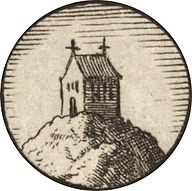
Back Ekklesiologie (Römisch-katholische Kirche) German Eclesiología católica Spanish Eklesiologi Katolik Malay
| Part of a series on the |
| Catholic Church |
|---|
 |
| Overview |
|
|
Catholic ecclesiology is the theological study of the Catholic Church, its nature, organization and its "distinctive place in the economy of salvation through Christ".[2] Such study shows a progressive development over time being further described in revelation or in philosophy. Here the focus is on the time leading into and since the Second Vatican Council (1962–1965).
Pope Paul VI stressed the importance of the church's self-knowledge in his first encyclical letter, Ecclesiam Suam:
We are convinced that the Church must look with penetrating eyes within itself, ponder the mystery of its own being, and draw enlightenment and inspiration from a deeper scrutiny of the doctrine of its own origin, nature, mission, and destiny.[3]
- ^ Treatise on the Power and Primacy of the Pope, paragraph 22 Archived 2008-09-24 at the Wayback Machine and following
- ^ Flinn, Frank K. (2007). Encyclopedia of Catholicism (Encyclopedia of World Religions). Facts on File. p. 247. ISBN 9780816054558.
- ^ Pope Paul VI, Ecclesiam Suam, paragraph 9, published on 6 August 1964, accessed on 9 July 2024

